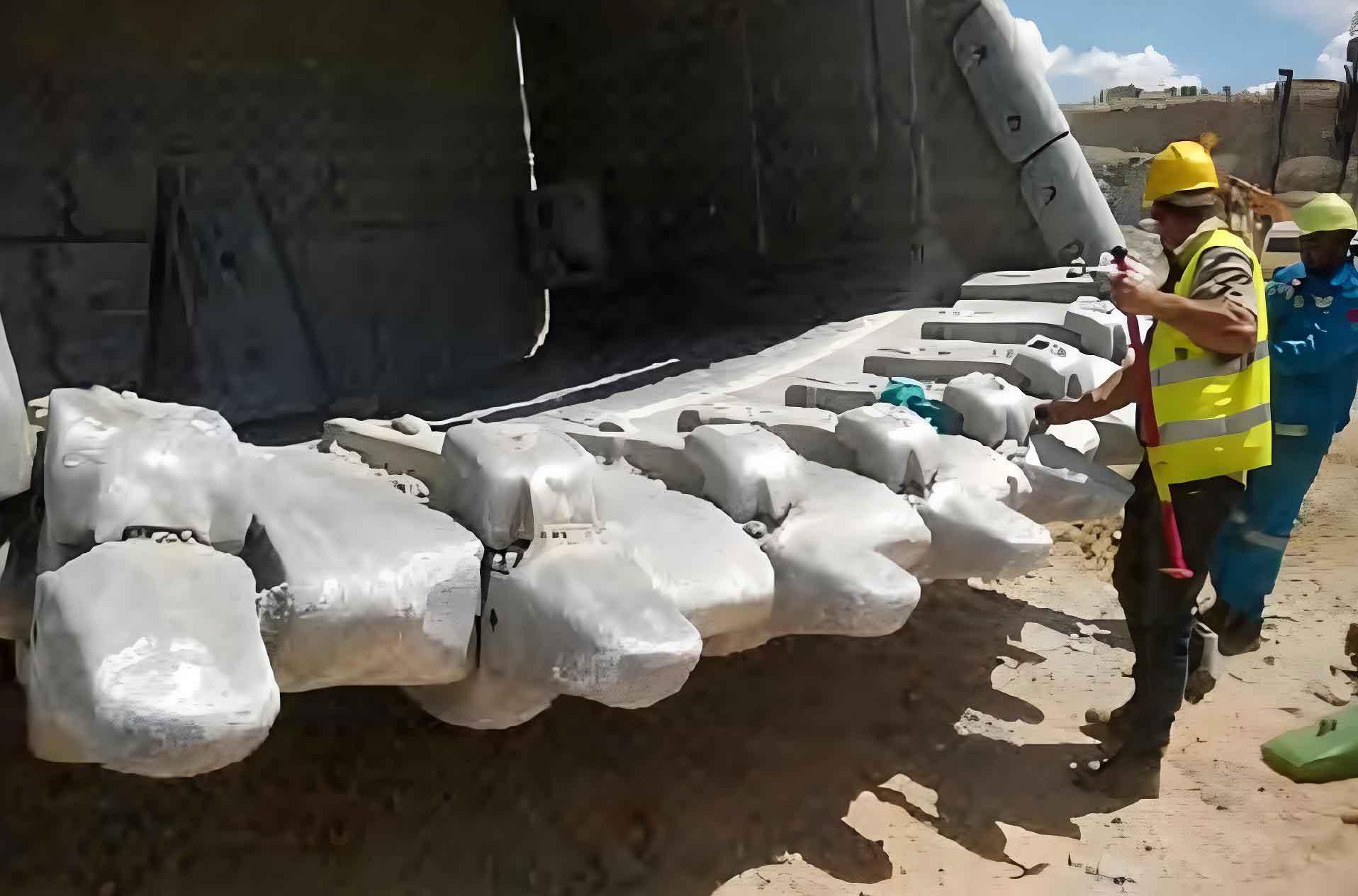Abstract: This paper delves into the parameterized design of the bucket teeth of the WK-75 mining excavator used in opencast mining, the simplification of its working device motion structure, and the simulation of bucket teeth wear. Based on these studies, improvements to the bucket teeth structure are proposed. Simulations demonstrate that these enhancements increase the efficiency and extend the service life of the bucket teeth.

1. Introduction
The extensive application of mechanical equipment in opencast mining has significantly boosted production efficiency, with mining excavators being a pivotal component. Bucket teeth, installed at the forefront of these devices, play a crucial role, and their wear and tear directly impact the lifespan of the equipment. Traditionally, it was perceived that wear resistance is positively correlated with the thickness of the bucket teeth, leading to material wastage and potentially counterproductive results in practical use. Therefore, it is imperative to optimize the design of bucket teeth.
This paper presents a study on the parameterized design, motion structure simplification, and wear simulation of the bucket teeth of the WK-75 mining excavator. Based on these findings, improvements to the bucket teeth structure are proposed, and simulations show that these enhancements increase the efficiency and extend the service life of the bucket teeth.
2. Design Improvements
2.1 Technical Route for Bucket Teeth Structure Improvement
The technical route for improving the bucket teeth structure.
2.2 Parameterized Design of Bucket Teeth
Bucket teeth are installed at the front end of mechanical equipment and directly contact materials during operation, playing a vital role. This study focuses on the bucket teeth of the WK-75 mining excavator.the components of the bucket teeth structure.
A parameterized model of the bucket teeth was created in the UG software, and key positions were assembled, establishing the foundation for subsequent motion model creation and bucket teeth wear analysis.
2.3 Simplification and Rationality Analysis of the Bucket Teeth Working Device Motion Structure
In opencast mining, large excavators often operate on material hills formed after coal wall blasting and stripping. They rotate the boom based on the chassis, control the stick rotation, and simultaneously use the control mechanism on the top of the bucket to control excavation.
The motion trajectory of the bucket teeth tip is the focus of further simplification and analysis to ensure minimum resistance during excavation. Assuming a fixed cutting angle δ during the sliding process of the bucket teeth and setting Q2 as the coordinate origin, with the vector path of points on the curve as ρ and the polar angle as θ, the simplified trajectory diagram.
By solving the equation, the motion trajectory is obtained as: ρ = ρ0 ⋅ eθ ⋅ cotδ. Although a perfect trajectory is impossible in practice, it still holds significance when considering a small segment. the parameters of the bucket teeth’s motion trajectory, offering insights into the dynamics of their movement during the excavation process. These parameters facilitate a deeper understanding of how adjustments to the bucket teeth’s design can optimize their performance and reduce wear.
Furthermore, to simulate and analyze the bucket teeth’s wear patterns, the study employed the EDEM software. By establishing a material accumulation module and configuring the motion time step, frequency, and stress sensitivity modules, the software enabled a visual representation of the entire excavation process. This visualization not only aids in understanding the bucket teeth’s interaction with the material but also allows for the recording of stress distributions on the bucket teeth at different times and locations.
The simulation revealed that the wear on the bucket teeth is unevenly distributed, with the ends experiencing significantly more damage than other parts. Specifically, the tooth edges that directly contact the material suffer less wear, highlighting that merely increasing the thickness of the bucket teeth may not be an effective strategy for enhancing their durability. Instead, a more nuanced approach is required.
In light of these findings, the study proposed modifications to the fillet radii (R1 and R2) of the bucket teeth. Various three-dimensional models were generated with different R1 and R2 values to simulate their wear patterns. The results indicated that increasing both R1 and R2 radii reduced the wear depth and rate. Consequently, an optimized design with a full fillet radius for R1 and an R2 value of 30mm was selected.
A comparison of the wear before and after the design improvement is presented. The improved design significantly minimized the wear dimensions, thereby enhancing the durability of the bucket teeth and validating the feasibility of the proposed modifications.
In conclusion, this study addressed the severe wear issue of bucket teeth in mining excavation equipment by analyzing the working mechanism and structure of the bucket teeth, conducting stress analysis, and simulating their wear patterns under different fillet radii using simulation software. The obtained optimal parameters demonstrate the rationality of the design improvements, ultimately contributing to the enhancement of mining efficiency and the reduction of operational costs.
